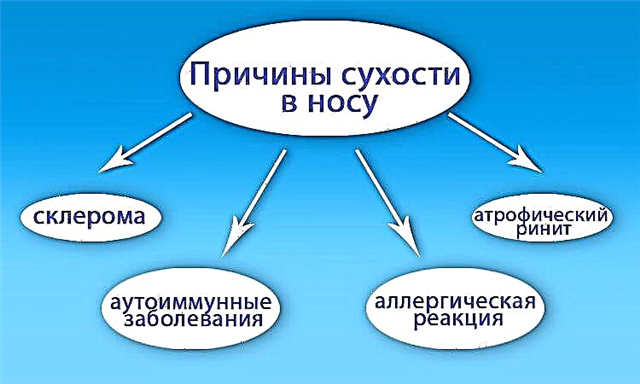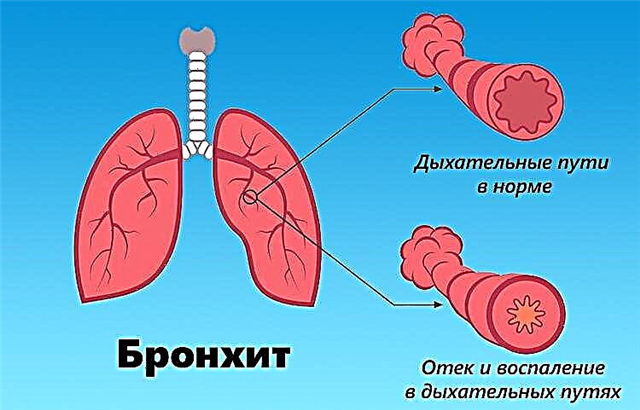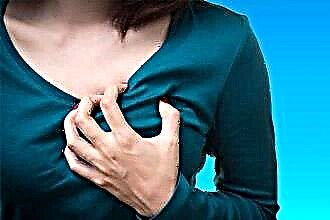 Depending on the duration of inflammation and the severity of symptoms, several forms of pathology are distinguished:
Depending on the duration of inflammation and the severity of symptoms, several forms of pathology are distinguished:
- acute - characterized by the appearance of a runny nose, sore throat, hoarseness and severe cough. It begins abruptly with a rise in temperature and has severe symptoms;
- chronic - differs in unexpressed signs, which intensify only with exacerbation. During periods of remission, children may have rare coughing and sore throat.
In addition, the inflammatory process can occur in a hypertrophic and atrophic form:
- the first type is characterized by thickening, swelling of the mucous membrane, through which dilated full-blooded blood vessels are visible. Sputum is produced intensively, therefore, when coughing, a large volume can be excreted;
- the second type is manifested by thinning of the mucous membrane, and the mucus is produced in small quantities. The child is worried about tickling and dryness in the oropharynx.
All causes can be divided into infectious and non-infectious. This is very important, because treatment tactics and the risk of complications depend on the type of cause.
The prevalence of infectious pathogens as a causative factor of tracheitis has been statistically proven. They enter the body through the respiratory tract, after which the disease develops against the background of a weakened immunity.
The infection can be:
- viral, for example, influenza, parainfluenza, adenovirus, RS virus, coronavirus. Viruses can lead to pneumonia if treatment is not started on time;
- bacterial, when streptococci, staphylococci, haemophilus influenzae, mycoplasma and chlamydia act as the cause of tracheitis. Without adequate therapy, children can develop pneumonia, meningitis, tonsillitis, otitis media and sinusitis.
If a yellowish tint appears in the sputum, bacterial inflammation should be suspected. Non-infectious causes include many factors:
- due to hypothermia or deep inhalation of cold air, a spasm of blood vessels in the respiratory tract occurs, due to which the local protection is weakened. As a result of this, opportunistic microorganisms, which normally do not cause illness, begin to multiply intensively, provoking an inflammatory reaction;
- weakening of the immune system leads to the development of many diseases, and tracheitis is no exception. Poor nutrition, hypovitaminosis, chronic diseases of the upper respiratory tract, severe infections and frequent colds can lead to a decrease in the immune defense in children;
- allergic reactions after taking certain medications, food, inhalation of chemicals, contact with animals or pollen;
- a traumatic factor when a button, candy or small parts of toys enter the respiratory tract. As a result of injury to the mucous membrane, inflammation develops;
- poor environmental situation. If a child lives in an area with polluted air, near chemical plants, this increases the risk of developing inflammatory foci in the respiratory system;
- long-term secondhand smoke, when parents, when smoking, do not pay attention to children who inhale the smoke of cigarettes nearby.
Manifestations
In order to start treating the disease on time, you need to carefully monitor the behavior of the child. Usually tracheitis manifests itself:
- severe cough. It often bothers at night or before the morning, has a paroxysmal character and gradually becomes damp. The reason for the development of an attack can be crying or loud laughter, as well as a rapid change in temperature when leaving the room in the cold;
- dyspnea. The child breathes frequently and shallowly;
- hyperthermia can reach 39 degrees with a tendency to increase in the evening;
- moodiness, tearfulness, quick fatigue and poor appetite;
- body aches.
Children may also have a hoarse voice, runny nose, or sore throat, depending on their underlying medical conditions.
In the case of an allergic origin of tracheitis, conjunctivitis, lacrimation, itching of the eyes, skin, rashes and swelling of the neck are possible.
How can I help my child?
When a child is sick, many parents start to panic, which always negatively affects the treatment process. Of course, you shouldn't underestimate the risk of complications either. First of all, when a cough appears, you need to start giving the child warm tea, compote, fruit drink or milk with soda, honey or Borjomi. Rest is mandatory, because physical activity depletes the body even more and makes it helpless.
If the temperature is normal, the appetite is preserved, and the cough is very rare and dry, no antiviral or antibiotics are required.
In this case, drinking plenty of fluids and taking cough medicine are enough. If the temperature gradually rises, the cough intensifies, and you notice the child's moodiness and drowsiness, this is a reason for a visit to the doctor. After the examination, he may prescribe more serious medications.
Cough medicine
Depending on the nature of the cough, the presence of sputum, its shade and viscosity, the following can be prescribed:
 antitussives such as Bronholitin, Pertussin, Gerbion, or Gedelix. They reduce the cough reflex and relieve the child from coughing;
antitussives such as Bronholitin, Pertussin, Gerbion, or Gedelix. They reduce the cough reflex and relieve the child from coughing;- expectorants - ACC, Lazolvan, Ascoril or Erespal. The action of the drugs is aimed at reducing the density of sputum, facilitating its excretion, expanding the bronchi and reducing inflammation;
- Ventolin - with bronchospasm;
- Pulmicort - in a severe case with suspected development of laryngospasm.
The drugs can be used in the form of tablets, syrup, or inhalation solution. The procedure is easily carried out using a nebulizer:
- the child does not need to adjust the inhalation to the device, it is enough to lean on the mask and just breathe;
- steam temperature control is provided;
- the medicine is clearly dosed.
With a nebulizer, you can use:
- expectorant drugs - Ambrobene;
- bronchodilators - Berodual;
- anti-inflammatory drugs - Rotokan;
- still mineral water or saline;
- antiviral drugs - Interferon.
The drugs are diluted with saline. For one inhalation, 4 ml of the prepared preparation is enough. In addition, inhalations can be carried out over a saucepan:
- you can add 5 g of soda to boiled potatoes;
- in hot water with a volume of 300 ml, you can add 2 drops of pine, fir or eucalyptus essential oil;
- decoction of herbs (sage, thyme, licorice root, marshmallow, thermopsis, pine buds);
- decoction with honey, propolis.
At temperatures above 37.7 degrees, inhalation is prohibited.
Folk recipes
You can fight a cough with the help of such folk remedies:
 in the radish you need to make a depression and fill it with honey. After 5 hours, juice will appear. It should be drunk 10 ml three times a day;
in the radish you need to make a depression and fill it with honey. After 5 hours, juice will appear. It should be drunk 10 ml three times a day;- the black radish must be washed, cut into cubes, sprinkled with sugar and baked for two hours in the oven. Pour the liquid into a bottle, take 10 ml twice a day before meals;
- Mix carrot juice with sugar syrup (1: 1). Drink warmed 10 ml three times;
- 2-3 figs need to be boiled in a glass of milk. Drink at night;
- cabbage juice with sugar to taste. Drink 5 ml twice;
- 15 g of dry plantain should be infused in 250 ml boiling water.Filter after two hours, take 10 ml three times before meals;
- 5 g of honey is mixed with 30 g of anise seeds and 2 g of salt. Then you need to fill it with 250 ml of water, boil, cool and filter. Drink 5 ml every 2 hours.
Compresses provide no less help for tracheitis. Strengthening blood circulation at the site of application of the compress can reduce inflammation.
The procedures can be carried out in this way:
- rubbing the chest and interscapular region with warmed animal fat, Dr. Mom's medicine, a solution of apple cider vinegar and water (1: 3);
- mustard plasters. To avoid burns, you can apply mustard plasters with the inactive side or on a gauze napkin;
- for warming, mustard can be poured into socks.
Prophylaxis
From birth, you need to take care of immunity. How often the child will get sick depends on his strength. Breastfeeding, hardening, walking in the fresh air, proper nutrition and adequate sleep are especially important. It is also important to treat colds in time and make sure that children do not overcool. These simple rules will help save your child from illness and save the nerves of parents.

 antitussives such as Bronholitin, Pertussin, Gerbion, or Gedelix. They reduce the cough reflex and relieve the child from coughing;
antitussives such as Bronholitin, Pertussin, Gerbion, or Gedelix. They reduce the cough reflex and relieve the child from coughing; in the radish you need to make a depression and fill it with honey. After 5 hours, juice will appear. It should be drunk 10 ml three times a day;
in the radish you need to make a depression and fill it with honey. After 5 hours, juice will appear. It should be drunk 10 ml three times a day;

